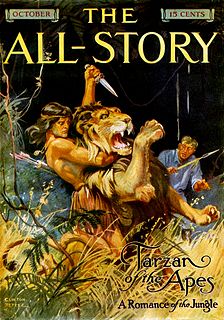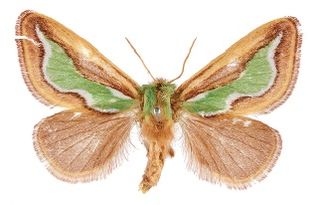Related Research Articles

Gibbons are apes in the family Hylobatidae. The family historically contained one genus, but now is split into four extant genera and 18 species. Gibbons live in subtropical and tropical rainforest from eastern Bangladesh to Northeast India to southern China and Indonesia.

Apes are a branch of Old World tailless simians native to Africa and Southeast Asia. They are the sister group of the Old World monkeys, together forming the catarrhine clade. They are distinguished from other primates by a wider degree of freedom of motion at the shoulder joint as evolved by the influence of brachiation. In traditional and non-scientific use, the term "ape" excludes humans, and can include tailless primates taxonomically considered monkeys, and is thus not equivalent to the scientific taxon Hominoidea. There are two extant branches of the superfamily Hominoidea: the gibbons, or lesser apes; and the hominids, or great apes.

Old World monkey is the common English name for a family of primates known taxonomically as the Cercopithecidae. Twenty-four genera and 138 species are recognized, making it the largest primate family. Old World monkey genera include baboons and macaques. Common names for other Old World monkeys include the talapoin, guenon, colobus, douc, vervet, gelada, mangabey, langur, mandrill, surili (Presbytis), patas, and proboscis monkey. Phylogenetically, they are more closely related to apes than to New World monkeys. They diverged from a common ancestor of New World monkeys around 45 to 55 million years ago.
Paleoanthropology or paleo-anthropology is a branch of paleontology and anthropology which seeks to understand the early development of anatomically modern humans, a process known as hominization, through the reconstruction of evolutionary kinship lines within the family Hominidae, working from biological evidence and cultural evidence.

Monkey is a common name that may refer to certain groups or species of simian mammals of infraorder Simiiformes. The term is applied descriptively to groups of primates, such as families of New World monkeys and Old World monkeys. Many monkey species are tree-dwelling (arboreal), although there are species that live primarily on the ground, such as baboons. Most species are mainly active during the day (diurnal). Monkeys are generally considered to be intelligent, especially the Old World monkeys of Catarrhini.
Mangani is the name of a fictional species of great apes in the Tarzan novels of Edgar Rice Burroughs, and of the invented language used by these apes. In the invented language, Mangani is the apes' word for their own kind, although the term is also applied to humans. The Mangani are represented as the apes who foster and raise Tarzan.

The Dalceridae are a small family of zygaenoid moths with some 80 known species encompassing about one dozen genera mostly found in the Neotropical region with a few reaching the far south of the Nearctic region.

The Limacodidae or Eucleidae are a family of moths in the superfamily Zygaenoidea or the Cossoidea; the placement is in dispute. They are often called slug moths because their caterpillars bear a distinct resemblance to slugs. They are also called cup moths because of the shape of their cocoons.

The saddleback caterpillar is the larva of a species of moth native to eastern North America. It is also found in Mexico. The species belongs to the family of slug caterpillars, Limacodidae.

The Hominidae, whose members are known as great apes or hominids, are a taxonomic family of primates that includes eight extant species in four genera: Pongo ; Gorilla ; Pan ; and Homo, of which only modern humans remain.

Parasa is a genus of moths of the family Limacodidae. It was described by Frederic Moore in 1860.

Tarzan is a fictional character, an archetypal feral child raised in the African jungle by the Mangani great apes; he later experiences civilization, only to reject it and return to the wild as a heroic adventurer. The character has been variously depicted as articulate and sophisticated as in the original novels, and as a noble savage with limited language skills such as in the films featuring Johnny Weissmuller.
Pseudaltha sapa is a species of moth of the family Limacodidae. It is found in northern Thailand and northern Vietnam at altitudes of 1,600 to 2,400 meters.
Austrapoda beijingensis is a species of moth of the family Limacodidae. It is found in China.
Austrapoda seres is a species of moth of the family Limacodidae. It is found in China on an altitudes of 1,600 meters.
Pseudidonauton bhaga is a species of moth of the family Limacodidae. It is found on Borneo, Peninsular Malaysia and Sumatra.

Parasa viridiflamma is a moth of the family Limacodidae. It is found in Taiwan. The habitat consists of mid-elevation mountain areas.

Parasa pygmy is a moth of the family Limacodidae. It is found in Taiwan, inhabiting mountains, at altitudes ranging from 2,000 to 3,000 meters.

Parasa minwangi is a moth of the family Limacodidae. It is found in the Nanling Mountains of southern China. The habitat consists of mid-elevation mountain areas.

Parasa martini is a moth of the family Limacodidae. It is found in Taiwan. The habitat consists of mid-elevation mountain areas with primary vegetation.